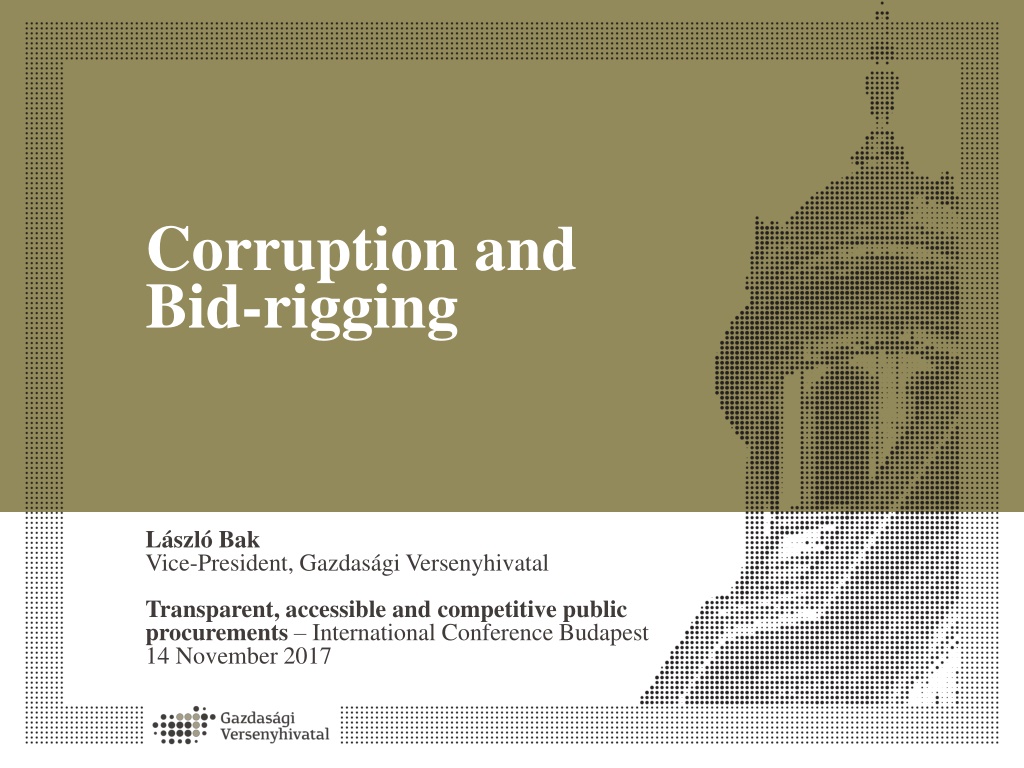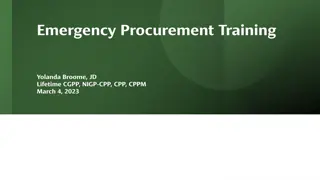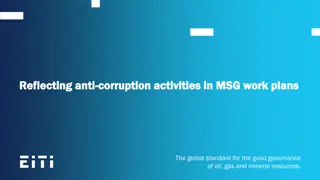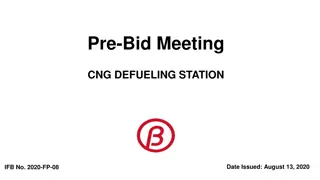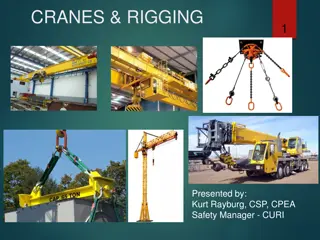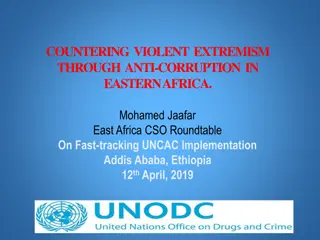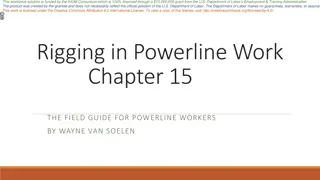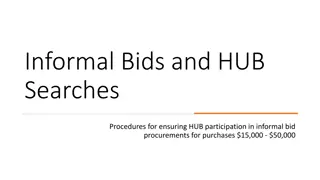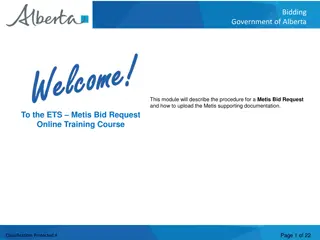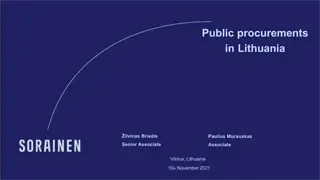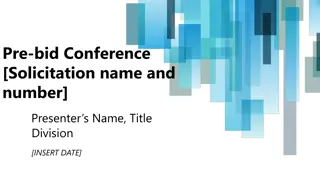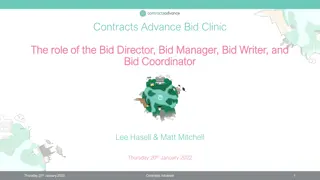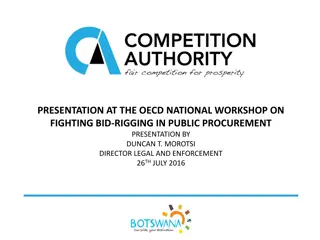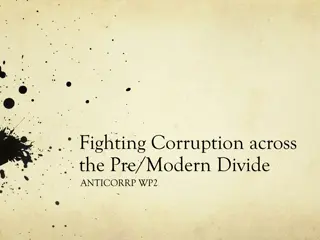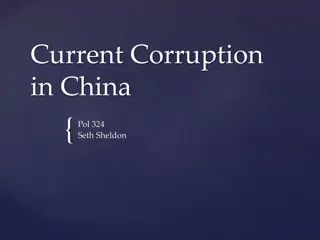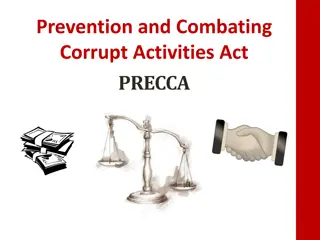Understanding Corruption and Bid-Rigging in Public Procurements
Explore the terminology, statistics, and possible scenarios of corruption and bid-rigging in public procurements as presented at an international conference in Budapest. The presentation highlights bid-rigging patterns, corruption behaviors, statistics on fines and cartel cases, typical scenarios, and the importance of detecting and reporting such activities.
Download Presentation

Please find below an Image/Link to download the presentation.
The content on the website is provided AS IS for your information and personal use only. It may not be sold, licensed, or shared on other websites without obtaining consent from the author. Download presentation by click this link. If you encounter any issues during the download, it is possible that the publisher has removed the file from their server.
E N D
Presentation Transcript
Corruption and Bid-rigging L szl Bak Vice-President, Gazdas gi Versenyhivatal Transparent, accessible and competitive public procurements International Conference Budapest 14 November 2017
I duly acknowledge the presumption of innocence of any person or undertaking. Any reference to corruption does not mean that the person or undertaking has actually committed a punishable act, unless a binding court judgment has ruled so. The views expressed in this presentation are my views and they do not necessarily reflect those of the Gazdas gi Versenyhivatal.
Outline 1. Terminology, competencies 2. Statistics 3. Possible corruption scenarios 4. Signalling to the GVH 5. Cooperation with other authorities 6. Conclusions
Bid-rigging and/or corruption? 1. Bid-rigging: an agreement between bidders that limits or reduces competition in a tender Bid-rigging patterns, e.g.: Cover bidding Bid suppression instruments Bid rotation Market allocation result 2. Corruption: abuse of entrusted power for private gain 3. Two distinct, but correlating behaviours GVH Police / Public prosecutor
Statistics I fines in closed bid-rigging cases
Statistics II launchedcartel cases 2012 2013 2014 2015 2016 2017 Nov All cases launched concerning restrictive agreements All other cases concerning restrictive agreements Cartels in public procurement Cartels in public procurement as a ratio of all cases concerning restrictive agreements 6 4 2 11 7 4 17 12 5 12 10 2 9 4 5 1 0 1 33% 36% 29% 17% 56% 100%
Statistics III In 2016, appr. 60-65% of cartel complaints related to bid-rigging activities Since 2013, the GVH filed criminal complaints in 7 cases 73% of parties under proceeding in cartel cases are SMEs GVH s experience: a frequent way in which bid-rigging schemes are implemented is bid rotation, resulting in market allocation
Typical scenarios for bid rigging and corruption 1. Scenarios differ Corruption serves bid rigging activities directly Bid rigging parties are tool for corruption 2. Time factor Chronological order and relationships are key issues 3. Characteristics Designation of winner among bidders Procurement official is informed of the pre existing bid rigging agreement Procurement official sets the tender or evaluation criteria with regard to the bid rigging agreement Bid rigging agreement is brokered before or during the tender
Possible corruption scenario I. Contracting Authority with 0% own contribution Transfer of 10% financial aid Intermediary 10% financial contribution Financial support 10% Bidder1 (void tender) Bidder2 (void tender) Bidder3 (winner) S u b c o n t r a c t i n g
Possible corruption scenario II. before-after consultation Time factor consultation collusion Announcement of tender
Possible corruption scenario III. setting of technical specifications Procurement officials responsible for tender invitations were also in charge of drafting technical specifications Post-arrangements (evaluation) Pre-arrangements Tender announcement
Possible corruption scenario IV. external help External consultant helps to prepare technical specifications of the tender Collusion; with help of consultant Modified tender Consultant helps wrong tender announcement
Signalling to the GVH PPA Sec. 36 (2): clear and manifest infringement or reasonable suspicion Do NOT discuss concerns with bidders Contact internal legal or audit staff Contact GVH discretely
Cooperation with other authorities 1. Criminal complaint (legal standard of proof?) 2. Information from the police (handling and obtaining of evidence?) Pacific Fruits C-469/15., WebMindLicenses C-419/14. 3. Cooperative relationships with other authorities
Conclusions 1. Cooperation between authorities necessary 2. Competition law toolbox useful against corruption 3. OECD Guidelines for fighting bid rigging in public procurement 4. Training of procurement officials 5. Educating SMEs - http://kartell.gvh.hu/
